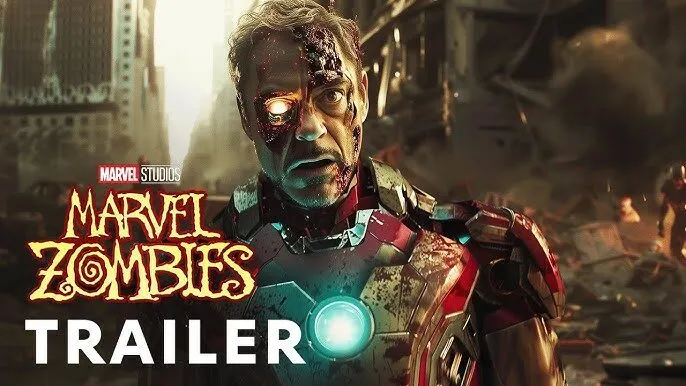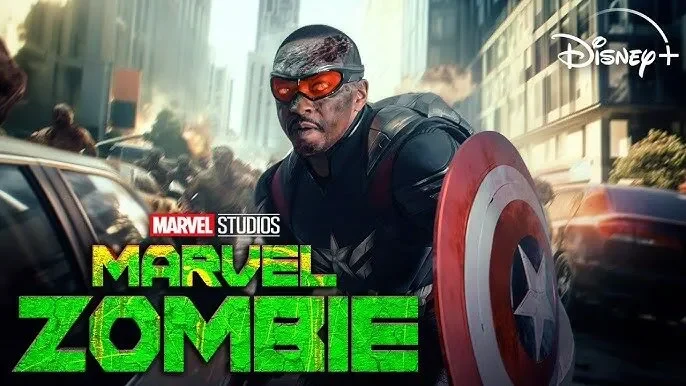From the very first frame, Marvel Zombies grips you with visceral intensity and uncanny humor that only Sam Raimi could deliver. The film opens on a crumbling New York City skyline, skyscrapers scarred by undefinable forces, and the Electrostatic hum of a quarantined S.H.I.E.L.D. facility. As the camera swoops through shattered windows and abandoned corridors, Raimi’s trademark dynamic angles and bursts of color illuminate the chaos. This is a world where everyone you thought you knew has fallen victim to a ravenous infection, yet life—or what passes for it—stumbles on in macabre parody.
Peter Parker, once the friendly neighborhood Spider-Man, hangs upside down by a web frayed and blood-soaked, his mask torn to reveal a gaunt, half-eaten face. His voice, when he speaks, is a raspy echo of the quips we loved, hollowed by the craving for human flesh. Contrast this with Bruce Banner’s Hulk, who now lumbers through city streets in a grotesque parody of green muscle, his roar a thunderous slap of bone against bone. Raimi balances gore and dark comedy with uncanny precision. One moment you recoil at the sight of zombified Avengers tearing into one another; the next, you’re chuckling at a zombified Nick Fury trying to order breakfast from an automated kiosk, only to claw at the screen until it bleeds.

Despite the horror, the heart of the film remains its human survivors. Among them is Dr. Elena Reyes (TBA), a brilliant virologist haunted by her failure to contain the initial outbreak. She navigates the rubble of Manhattan alongside James “Rhino” Patel (TBA), an ex-NYPD officer with a prosthetic hip and an unbreakable sense of duty. Their bond forms the emotional core of the narrative. In a standout sequence, they venture into Grand Central Station under flickering lights, hunting for a rumored cure hidden in a S.H.I.E.L.D. lab. Suspense coils tighter with every step: a sudden creak, the shuffle of feet, then the abrupt appearance of a zombified Doctor Strange, his cloak trailing spectral energy and trailing sinew. The ensuing battle—Reyes improvising with makeshift tranquilizers, Patel charging in with a sledgehammer—blends horror, heroism, and Raimi’s signature slapstick violence.
Sam Raimi’s direction elevates Marvel Zombies beyond simple shock value. He’s unafraid to lean into comic book aesthetics—animated transitions mimic panel jumps, sound design emphasizes the rasp of decaying throats and the metallic thud of severed limbs. Yet he also crafts intimate moments of humanity. In one poignant scene, Reyes finds an old videotape of her daughter’s birthday party. The laughter echoes over the din of the apocalypse, and as she holds the tape, tears streak through her contamination suit. It’s a reminder of what’s at stake: not just survival, but the preservation of love in a world gone mad.

Visually, the film is a feast of nightmarish beauty. Cinematographer Peter Deming bathes scenes in sickly neon and shadow, creating a world that feels both hyperreal and grotesquely alive. Practical effects dominate—prosthetic limbs, animatronic heads, gory makeup—grounding the horror in tangible craftsmanship. When zombified Thor descends from a storm-scarred sky, his eyes glow with unholy hunger, his hammer Mjolnir dripping with entrails, the sequence becomes an operatic crescendo of dread and awe.
The score by Danny Elfman is another triumph. It weaves classic Marvel motifs into dissonant arrangements, blending heroic brass fanfares with ethnic percussion and electronics that crackle like mutated energy. The music punctuates action scenes with exhilaration and underscores quieter moments with mournful melancholy.

Performance-wise, even without a confirmed cast, it’s clear that this film demands actors willing to embrace physicality and dark humor. The role of Reyes calls for someone who can convey scientific brilliance under extreme duress, while Patel needs a performer who balances grit and tenderness. Rumors suggest names like Tatiana Maslany and John Boyega in early talks, and that pairing could bring the perfect combination of emotional depth and charismatic presence.

Narratively, Marvel Zombies subverts expectations. It doesn’t linger on origin explanations. Instead, it thrusts you into the aftermath, letting you piece together the virus’s spread through news clips and shredded journal entries. The script smartly avoids over-explaining, trusting the audience to fill in gaps, which heightens tension and mystery. As Reyes and Patel journey toward their goal, they encounter pockets of resistance: surviving Inhumans turned guerrilla fighters, street gangs using zombie hordes as weapons, and a deranged preacher who believes the outbreak is divine retribution. Each encounter reveals new facets of this shattered world.
The climax erupts atop the Avengers Tower, now a fortress under siege. Reyes, armed with her fledgling cure, confronts zombified Doctor Doom in a laboratory flooded with broken glass and pulsing vials. The battle is both physical and moral: can she justify saving a world that has butchered itself? Her choice resonates with the film’s underlying theme—hope exists even in the darkest places. When the cure aerosolizes into the night sky, the first few zombies falter, shake off their hunger, and collapse in human form, gasping for air. It’s a moment of triumphant catharsis that feels earned rather than contrived.
Marvel Zombies is not for the faint of heart. Its graphic violence and chilling gore push boundaries, yet Sam Raimi’s unmistakable wit and heart keep it from descending into nihilism. Instead, it offers a thrilling meditation on heroism, survival, and the resilience of compassion. By the final credits, you’re left both exhilarated and haunted, pondering the fine line between hero and monster. If Marvel’s cinematic universe needed a bold reinvention, this is it—a deliciously dark, relentlessly entertaining ride that redefines what a superhero movie can be.
